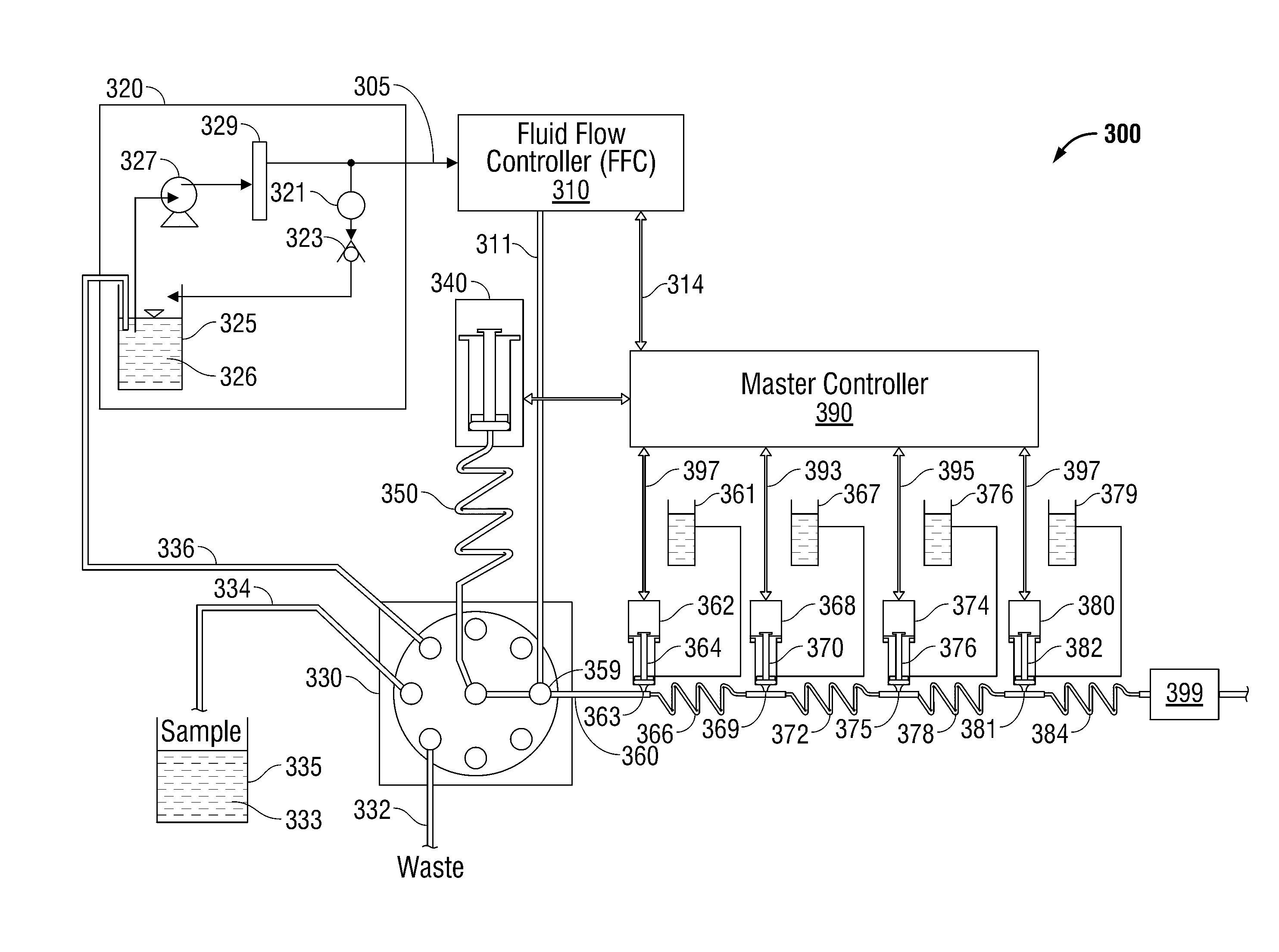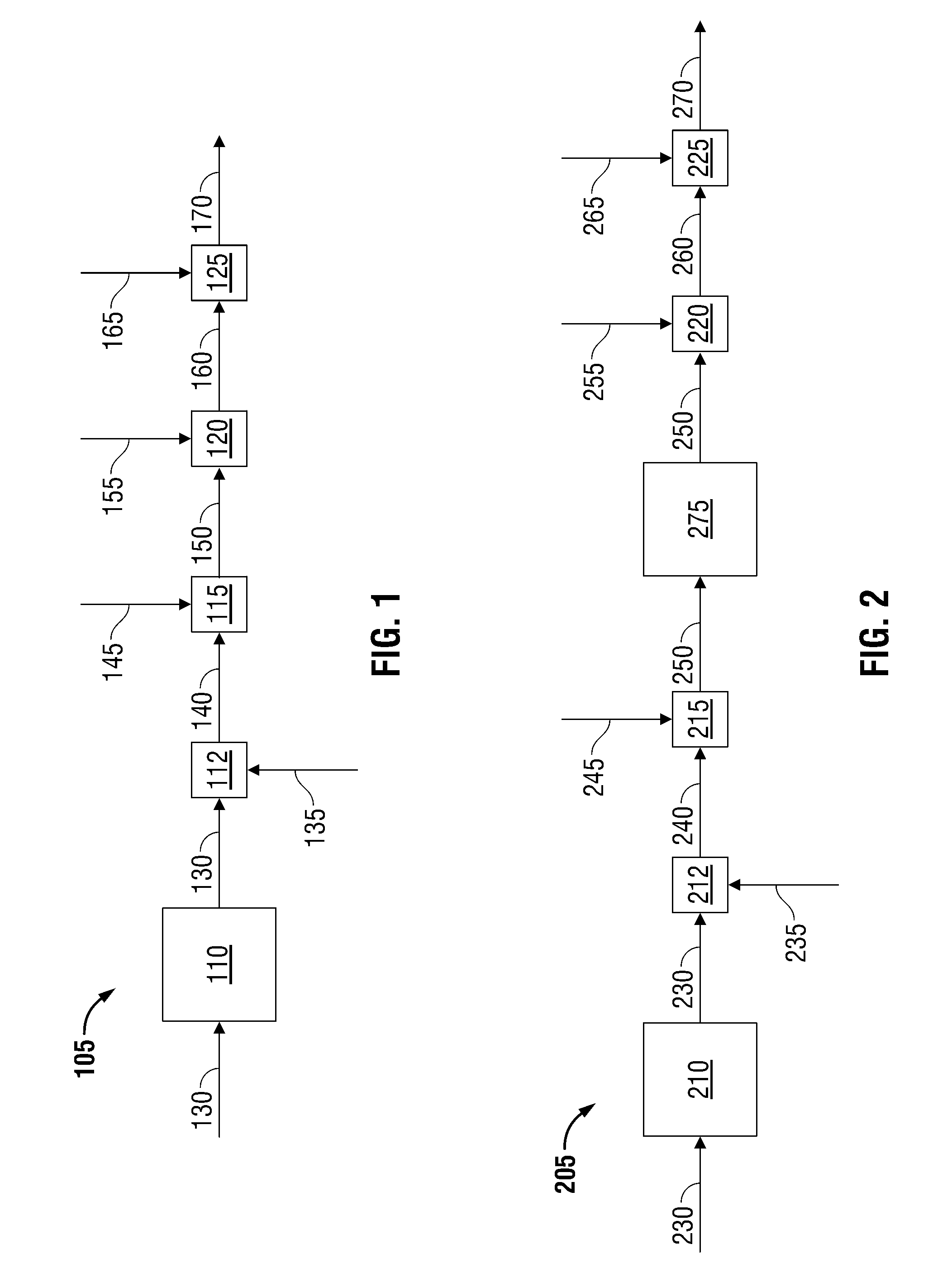System and Method for Regulating Flow in Fluidic Devices
- Summary
- Abstract
- Description
- Claims
- Application Information
AI Technical Summary
Benefits of technology
Problems solved by technology
Method used
Image
Examples
example
[0043]An example application of sample and reagent addition process 105 is in the determination of nitrate in water samples. In preparation for sample processing, a carrier stream was aspirated into a syringe through a valve aligned with a reservoir of deionized water. The valve was then switched to place the syringe in-line with the primary fluidic conduit, and the carrier was pumped downstream through the entire fluidic conduit and into a flow cell where a water baseline was established. This apparatus corresponded with pump 110 in FIG. 1.
[0044]Once the water baseline was established, the sample was injected into the carrier stream at sample addition point 112 in FIG. 1. Subsequently, a quantity, of ammonium chloride (R1) was pulsed into the carrier stream on top of the sample zone in the carrier as it passed reagent addition point 115 in FIG. 1 and pumped into a mixing device and a reaction device. The carrier / R1 combination was then pumped through a conduit coated with cadmium t...
PUM
 Login to View More
Login to View More Abstract
Description
Claims
Application Information
 Login to View More
Login to View More - R&D
- Intellectual Property
- Life Sciences
- Materials
- Tech Scout
- Unparalleled Data Quality
- Higher Quality Content
- 60% Fewer Hallucinations
Browse by: Latest US Patents, China's latest patents, Technical Efficacy Thesaurus, Application Domain, Technology Topic, Popular Technical Reports.
© 2025 PatSnap. All rights reserved.Legal|Privacy policy|Modern Slavery Act Transparency Statement|Sitemap|About US| Contact US: help@patsnap.com



